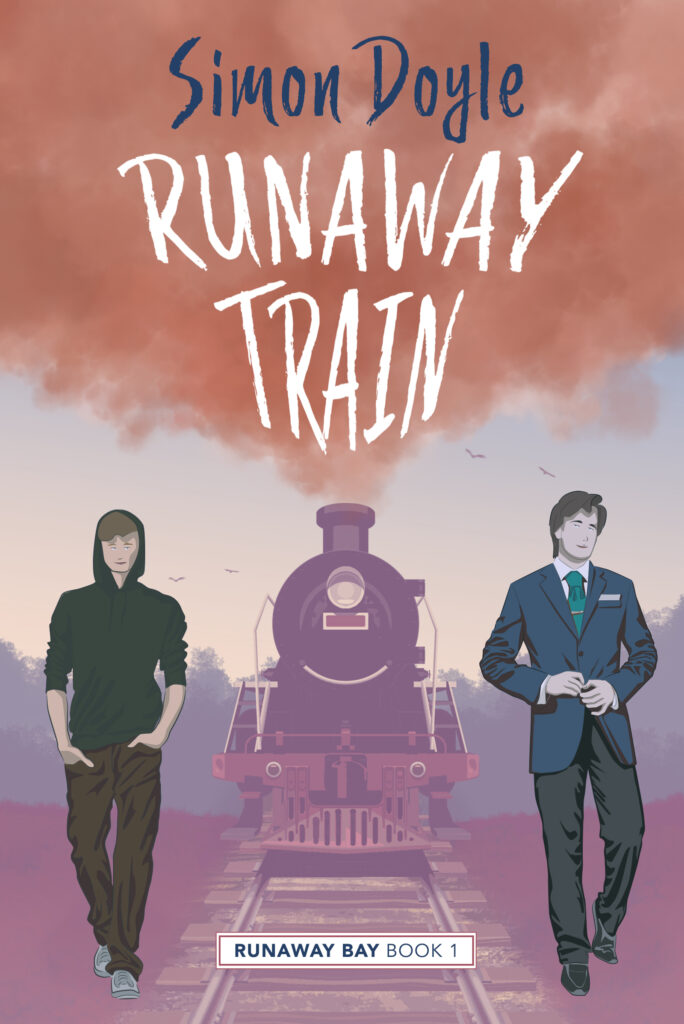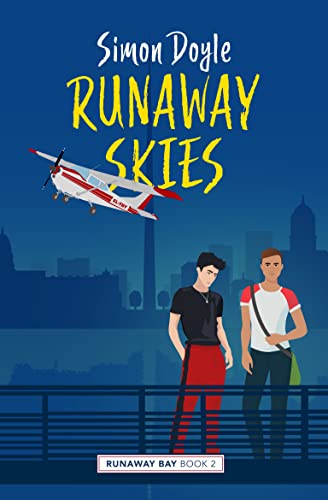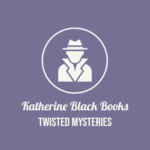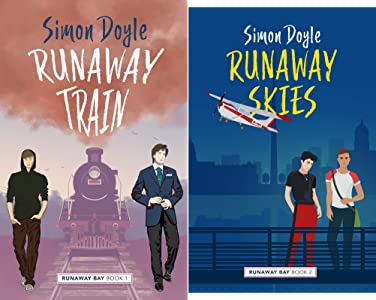Crafting Bestsellers: Tips for Writing
Crafting Bestsellers: Tips for Writing Books that Captivate Your Audience
GUEST ARTICLE BY SIMON DOYLE
 Crafting a book that captivates your audience is an art form. Bringing characters to life, setting the perfect scene and developing a story arc that keeps readers gripped with anticipation takes more than just putting pen to paper. From bestselling memoirs to captivating thriller novels, the world of literature is filled with examples of work that has stood the test of time and captured readers’ imaginations in powerful ways. But what makes these books stand out? How can aspiring writers develop their stories into bestsellers themselves? In this article, we’ll delve into some tips for crafting books that will grab your reader’s attention from start to finish.
Crafting a book that captivates your audience is an art form. Bringing characters to life, setting the perfect scene and developing a story arc that keeps readers gripped with anticipation takes more than just putting pen to paper. From bestselling memoirs to captivating thriller novels, the world of literature is filled with examples of work that has stood the test of time and captured readers’ imaginations in powerful ways. But what makes these books stand out? How can aspiring writers develop their stories into bestsellers themselves? In this article, we’ll delve into some tips for crafting books that will grab your reader’s attention from start to finish.
Creating Compelling Characters: How to Make Readers Fall in Love with Your Protagonist
Creating compelling characters is perhaps one of the most important aspects of writing a successful book. Your protagonist should be someone readers can relate to, root for, and ultimately fall in love with throughout their journey. To achieve this, you need to give your character depth – flaws, desires, motivations – so they feel like real people rather than just a plot device. One way to make your protagonist more relatable is to give them something we all struggle with: internal conflict. Maybe they have conflicting feelings about their personal relationships or are grappling with some inner turmoil. Whatever it may be, showing how your character deals with these issues will allow readers to connect with them on a deeper level.
Another key element in creating an endearing protagonist is making sure that they’re dynamic throughout the story. Nobody wants to read about a stagnant character who remains unchanged from beginning to end; instead, strive for growth and development over time through experiences and revelations throughout their arc. By crafting multidimensional characters whose personalities evolve throughout the course of the story, you’ll increase reader engagement as well as provide immense satisfaction when they witness the progress achieved by your character at its end.
Building a World That Feels Real: Tips for Crafting a Setting that Readers Can’t Resist
Building a world that feels real is crucial for capturing your audience’s attention and keeping them invested in the story you’re telling. A setting that doesn’t feel authentic or immersive can make it difficult for readers to connect with the characters or events of the plot. To craft an environment that draws readers in, it’s important to pay attention to details – from the sights and sounds of a location to character interactions with their surroundings. One key element of creating a believable world is researching real-world locations and cultures. Whether you’re writing about a familiar city or a fantastical realm, taking inspiration from actual places can lend credibility and depth to your writing. Additionally, consider how different aspects like weather patterns, geography, or social structures might impact your characters’ lives within your fictional setting.
Finally, don’t forget about sensory cues when describing your world-building efforts – smells, textures and tastes are just as important as what characters see or hear. Engaging all five senses through vivid descriptions and thoughtful detail work in your writing process will help bring worlds into sharper focus for readers who want nothing but more out of every page they read.
Plotting for Success: Strategies for Structuring Your Story to Keep Readers Hooked
Crafting a compelling plot that keeps readers hooked is no easy feat, but it’s essential if you want to create a bestselling book. One of the keys to success is creating tension and conflict right from the outset so that your audience has an emotional investment in the story. Introduce your main character, establish their goals and then throw obstacles in their path at every turn. Another important element of plotting for success is pacing – you need to keep your story moving forward without giving too much away too soon. Don’t be afraid to use cliffhangers or unexpected twists and turns to keep readers engaged, but make sure they feel earned rather than contrived. To achieve this balance, it’s important to have a clear outline of your story before you start writing. Even if you’re not someone who enjoys planning out every beat of the narrative in advance, having a strong sense of where you’re headed will help you stay on track. Even “pantsers” (those who write by the seat of their pants) should understand where their story is going and have a clear destination in mind.
Ultimately, crafting bestsellers requires putting as much emphasis on the craft as on creativity – knowing which conventions are tried-and-true (like incorporating memorable protagonists and sharp dialogue) while also injecting fresh ideas into them. By structuring your story with care and attention early on, however convoluted or simple it may seem, you can increase its chances significantly of becoming beloved by audiences.
 Crafting Unforgettable Scenes: Techniques for Writing Vivid and Memorable Moments
Crafting Unforgettable Scenes: Techniques for Writing Vivid and Memorable Moments
Crafting unforgettable scenes is an essential skill in any writer’s toolbox. These are the moments that stay with readers long after they’ve finished your book, and they can make or break a story. Whether you’re writing a romance novel, a fantasy epic or a non-fiction memoir, crafting vivid and memorable moments is key to keeping your audience engaged from start to finish. To create unforgettable scenes, writers need to focus on sensory detail. This means using not just visual descriptions but also incorporating sounds, smells, tastes and textures into their prose. By tapping into multiple senses at once, authors can transport their readers right into the heart of their stories.
Another crucial technique for crafting powerful scenes is building tension through conflict. This doesn’t necessarily mean physical fights or battles – conflict can manifest in many different ways: disagreements between characters, secrets being revealed or even internal struggles within one character’s mind. Whatever form it takes though, creating tension and drama is essential for making these climactic moments really stand out in readers’ minds.
The Power of Dialogue: How to Write Conversations that Sound Natural and Engaging
One of the key elements in captivating your audience is mastering the art of dialogue. Dialogue can be a powerful tool for developing characters and moving the plot forward, but it’s important to write conversations that sound natural and engaging. This means paying attention to things like pacing, tone, and word choice – taking care not to make your characters sound like robotic actors reciting lines. To craft realistic dialogue, you need to pay close attention to how people actually speak in real life. This involves listening carefully to how people express themselves through their word choice, intonation, and body language – even when they’re not speaking directly to you. Use these observations as inspiration for creating believable exchanges between your characters.
However, writing good dialogue is more than just mimicking real-life conversation; it also requires careful consideration of pacing and structure. Captivating conversations should move at a brisk pace while allowing room for character development or plot revelations – too much detail can bog down the momentum of your story. By mastering these key aspects of writing naturally flowing conversations that are both interesting and realistic we can truly capture our reader’s imaginations with ease.
Editing and Revising: Tips for Perfecting Your Manuscript and Making it Shine
Editing and revising a manuscript is essential to crafting a bestseller. It’s the polishing stage where writers can refine their work, sharpening its edges until it shines like a diamond. The first step towards perfecting your manuscript is to get feedback from others. A fresh set of eyes can help pinpoint areas that need improvement or clarification. Once you’ve received constructive criticism, it’s time to start self-editing. The revision process involves several stages, such as addressing plot holes, pacing issues, and character development problems. By paying close attention to detail and asking probing questions about each element of your story, you’ll be able to strengthen its overall structure and flow. Moreover, keeping in mind the target audience for your book will help guide you while editing.
When revising your work, try different writing techniques like using metaphors instead of clichés or playing with sounds so that sentences have more musicality – this may make them much easier on the ear. Finally relying on proofreading tools such Grammarly or the Hemmingway editor could enhance the clarity of your text ensuring minimal errors. By taking these steps in conscious thought throughout both phases – editing and revising – invariably ensures you have crafted an exceptional piece which follows all principles necessary for captivating the readership required for any book that is worthy of success.
Your final step, once you’ve self-edited your novel to within an inch of its life, is to pass it over to a professional editor – who will then strip down all the things you thought were brilliant but were holding your story back. A professional editor is worth their weight in gold.
© Simon Doyle, published with permission.


Meet Simon Doyle
Simon Doyle (he/him) was born and raised in Ireland. He discovered that he could travel the world on a shoestring by reading books at a very young age. When he won a local poetry competition at the age of nine, it sparked a lifetime love of words. But he swears never to write poetry again.
His first novel was Runaway Train, book 1 of the Runaway Bay series.
He lives with an extremely neurotic rescue dog, and Lucas, his human soulmate. They met in kindergarten. Where all good stories begin.
You can find Simon Doyle over at his website, Simon Doyle Books, or on his review blog, SimnSays.cc. He’s also active on Instragram.
“Charming. Doyle’s sublime prose is a joy to read.” — Readers’ Favorite
“A unique and heartwarming story.” — Love Bytes Reviews
“Gay fiction at its finest.” — BBE
When nineteen-year-old Denis Murphy sneaks onto an exclusive overnight train from Dublin to Belfast, he wasn’t counting on being caught. Or falling in love. But he has some trust issues to overcome first.
Oliver Lloyd is famous just for being rich, but he doesn’t let it affect him the way it does his sister. When he is asked to cut the ribbon at the launch of Ireland’s first extravagant overnight train service, he jumps at the chance to get away from his money-grabbing friends and his narcissistic ex-boyfriend and clear his head.
But when Denis and Oliver are thrust together onboard a luxury steam train, the screeching brakes won’t be the only thing making sparks fly.
If only they could get past their differences.
“Brilliant and compelling” — Love Bytes Reviews
19-year-old French student Kaiser “Kai” Kateb has too many secrets to keep. And to his deeply religious parents, the fact that he’s gay isn’t even the worst of it—He’s the only one who knows what happened to his sister the night she disappeared six years ago.
So when Kai travels to Ireland for university, his goal is to leave all those secrets behind.
Caleb Burke has had a change of heart. Literally. But that doesn’t stop him from wanting to escape the overbearing care of his attentive mother. With a need to push the boundaries of life, he has his eyes set firmly on the skies.
One is afraid of living. The other has stared death in the face. And as Kai’s secrets come to light, they’ll need each other more than ever.
But can they overcome their fears together? Or is the truth too difficult to bear?






